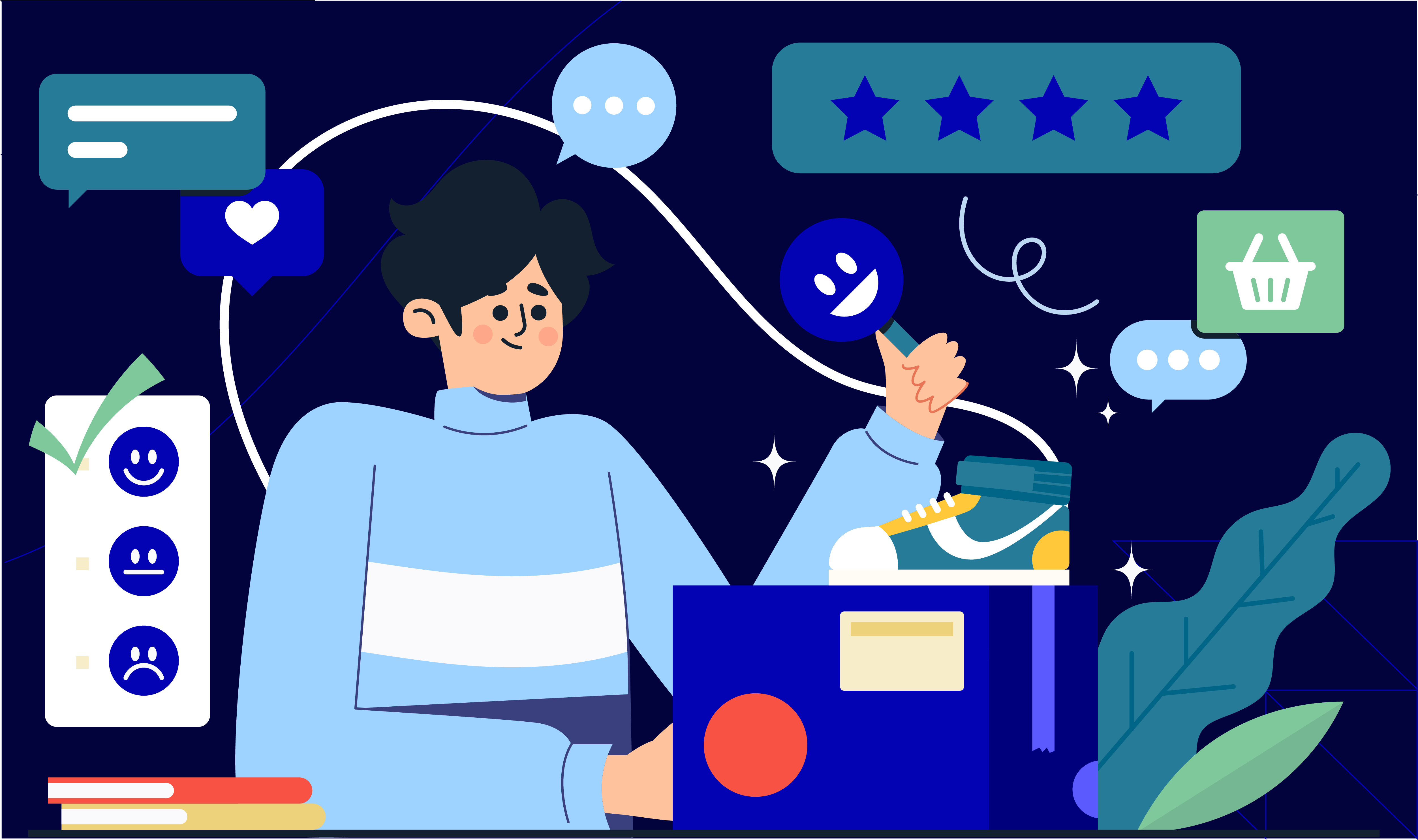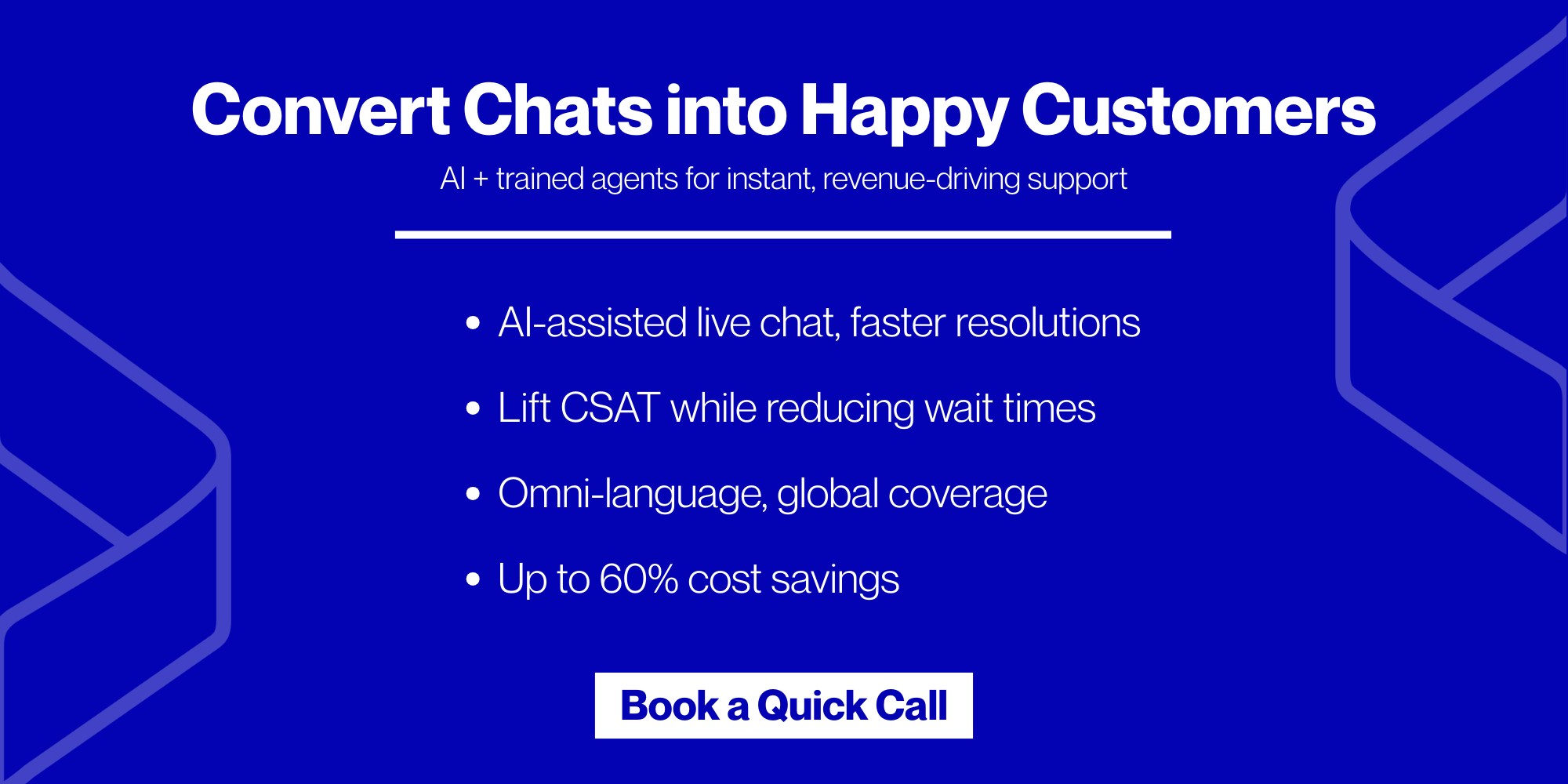At present, in 2025, Satisfied clients are customers whose expectations have been met or exceeded by a company’s products, services, or support. They experience positive interaction throughout their customer journey. This satisfaction often leads to repeat business, brand loyalty, and positive word-of-mouth referrals.
For consumer brands and D2C companies in the U.S., U.K. & Australia, especially those with $5M+ revenue, customer happiness isn’t just a “nice-to-have.” It’s a growth engine.
A brand is no longer what we tell the consumer it is. Instead, it is what consumers tell each other it is. – This famous quote strongly applies in this modern era!
That’s largely because when you keep customers happy, they actively promote your brand. Research shows that 75% of satisfied customers recommend companies based on excellent service. Additionally, referred customers:
- Generate 3 to 5 times higher conversion rates
- Are 4x more likely to buy when referred by a friend
So, how can you increase customer satisfaction and build loyalty? In this article, let’s study how to keep customers happy through twelve creative ways.
How to Keep Customers Happy? 12 Creative Ways You Must Know!

In the past, businesses grew by meeting basic customer needs. But now, that is no longer enough! Today, customers want more than just a product or service.
They expect a seamless experience and if they don’t get it, they may switch to your competitors. Studies found that 49% leave brands after poor interactions (PwC, 2024).
So, want to make them more loyal? Below are twelve creative ways that can keep your customers satisfied:
1. Make Every Customer Feel Like a VIP
Most customers prefer talking to a real person, not a system or script. When you treat people like individuals, they are more likely to trust your business and come back again.
To earn satisfied clients and make your service more personal:
- Use the customer’s name in emails and conversations.
- Avoid sending automated messages. Instead, write messages that are meant for each person.
- Thank customers directly when they make a purchase or support your business.
- Learn about your customers:
- What do they buy?
- How often do they purchase?
- Do they have any special needs?
- Look for shared experiences or interests. This lets you build a stronger connection.
- CX leaders in consumer brands should use purchase history and preferences to create targeted offers.
2. Delight with the Unexpected
By giving small gifts or showing appreciation, you can build stronger customer relationships and earn satisfied clients. Some common examples of this approach are:
- Send customers a small item with your logo, such as a pen, keychain, or sticker.
- Offer exclusive discounts to repeat customers.
- Launch offers on special occasions.
- Write thank-you cards for purchases or support.
Please note that these gestures do not need to be expensive. What matters is showing that you appreciate the customer. As a tip, try to choose the right gesture based on the customer’s preferences. For example, some people like gifts, while others may prefer a discount or personal message.
3. Build Solutions Together!
Always listen to your customers. Let them share feedback, concerns, or suggestions. Such an approach has dual benefits:
- It shows them that their voice matters.
- It lets you understand what to improve
Some common ways to do this are:
- Ask for feedback after a purchase or service interaction.
- Admit when something went wrong, and take clear steps to resolve it.
- Follow up after solving a problem to check if the customer is satisfied.
This kind of communication builds trust and keeps customers satisfied. It also helps in the early detection of problems (like delivery problems or product defects).
4. Put Power in Their Hands
Many customers prefer to solve small problems on their own instead of contacting support. In fact, a survey states that over 50% of customers prefer self-service (Zendesk, 2025).
To support this, you can give customers tools like:
- Step-by-step guides
- Simple tutorials
- Troubleshooting instructions
- Multiple support options (phone, email, chat)
Next, please make sure that all of these tools are written in plain language. For this purpose, you can use a rewording tool to make your “help documents” simpler to understand. However, you should always give customers the option to speak with a real person if the self-help options don’t work.
Customers fitting our ICP, especially those in the customer support and service or experience departments truly value this kind of transparency and collaboration. Brands in our ICP benefit from reduced support loads while improving satisfaction.
5. Build a Brand Family
By building a “customer community”, you can help your customers and strengthen your brand. For the unaware, a community gives customers a space to:
- Share their feedback
- Talk about issues
- Help each other
You can create a community on:
- Social media (like Facebook Groups or LinkedIn)
- Your website using a forum or community board
Next, make sure these spaces are properly managed. You or someone on your team should moderate the conversations. Such moderation makes sure people follow the rules and behave respectfully.
To manage a community professionally, you can:
- Set clear rules and post them where everyone can see
- Act quickly if someone breaks the rules
- Make sure real conversations can still happen
By running a well-managed community, you can show that your business listens! This lets you keep your customers satisfied. CX directors can make communities for product insights and advocacy.
6. Let Smart Tech Do the Heavy Lifting
In 2025, personal service is important, but by using AI (artificial intelligence), you can improve customer service without losing that personal touch. Recent studies show that by the end of 2025, 80% of companies will use AI chatbots for customer service.
That’s largely because AI tools can:
- Answer common questions automatically
- Show useful data, like what products people are buying or what problems they face
- Remind you to send thank-you notes or follow-ups
Additionally, when you use AI for simple tasks, that gives your team more time to focus on escalated issues. For example,
- An AI chatbot can help customers with basic issues 24/7 (even outside business hours).
- However, if the problem is more serious, a human can step in!
- AI frees your CX team for complex, high-value conversations.
7. Hear More Than Just Words!
To keep your customers satisfied, you must listen to them carefully. This technique is known as “active listening”.
While conversing with customers, your customer support agents must:
- Pay close attention to what the customer is saying. Don’t just hear the words! Instead, they should notice their tone and emotions.
- Let the customer finish speaking before they respond. They mustn’t interrupt!
- Make sure to mention their concerns when responding. This shows your agents heard and understood them.
- Repeat what the customer said (if needed) to confirm your agents understood the customer’s concerns correctly.
- Ask questions to make sure they are clear about the problem.
Even though it’s simple, this skill is often missing in customer service! Always remember that when your agents listen properly, your customers feel respected. This makes it easier to earn satisfied clients. Active listening reduces churn and builds empathy based loyalty.
8. Solve Problems Before They Start
Always follow a proactive approach. Remember that it is always better to prevent problems than to resolve them later. In 2025, Good customer service means looking ahead and solving issues before customers even notice them.
Let’s see how your business can do that:
- Communicate regularly with your customers (through email service outsourcing, updates, or social media).
- Watch for patterns in customer questions or problems. This lets your agents predict what issues might come up.
- Post answers and troubleshooting steps online so customers can resolve common problems themselves.
- Share updates when something changes in your service or product (so your customers are not caught off guard).
These small steps avoid confusion or delays. Being proactive, you have a better chance of earning satisfied clients.
9. Speak Their Language and Win Their Trust!
Today, your customers may come from several different countries or language backgrounds. Thus, if you want to keep customers satisfied, your business must speak their language.
A CSA Research found 40% won’t buy from brands that don’t offer support in a native language.
Hence, to support this:
- Offer website content, surveys, and help guides in multiple languages.
- Use AI tools (like chatbots) that support more than one language.
- Hire team members who can speak different languages.
These efforts show customers that your business respects their background. Additionally, they also feel more comfortable asking for help in their native language.
10. Focus on Customer Retention
In 2025, popular studies show that a 5% boost in retention can increase revenue 25–95% (Bain & Co.). But why? That’s largely because loyal customers:
- Buy more over time
- Need less support
- Are more likely to refer others
- May leave positive reviews
- Provide a steady source of income
When it comes to revenue, another study found that loyal customers spend 67% more than new customers through repeat purchases and upsells. So, loyal customers are more valuable in the long run than first-time buyers.
To keep your existing customers you can offer:
- Loyalty programs (rewarding repeat purchases)
- Discounts for returning customers
- Gift cards
- Early access to new products or sales
These rewards build trust and keep customers satisfied. They also give you chances to apply other customer service steps, like personal communication or follow-up messages.
11. Train Your Team to Win Every Conversation
When your employees are trained well, they give better service. That leads to happy clients and stronger loyalty. Ideally, your training program should include:
- Practice real customer problems
- Skills like active listening and communication
- Quizzes or role-play to test your agent’s knowledge
- Regular feedback on how your agents are performing
But will my employees participate? To improve employee engagement, you can follow the approach of “gamification”. Using it, you can turn training into a game where you let your employees earn points or rewards while they learn. This keeps them engaged and helps them remember the material.
12. Let the Numbers Guide You
Rely on customer feedback. It gives you real information you can use! For example, you might learn that people are confused by your website or that they want a new product feature.
It shows what’s working in your business and what needs to improve. Such an understanding allows you to keep customers satisfied and offer better support.
You can collect feedback through:
- Surveys
- Online review platforms
- Feedback forms
- Social media
- Sales data
Furthermore, please realise that you must look at feedback regularly, not just once. Long-term analysis allows you to spot patterns and catch problems before they grow.
Ideal Customer Profile (ICP) of AtiDiv.com
To provide even more targeted solutions in 2025, AtiDiv focuses on a specific ideal customer profile.
Markets: US, UK, Australia
Industry: Consumer brands and D2C companies
Roles/Departments: Customer support or Customer experience
Seniority Level: VP, senior manager, Director
Employee Size: 5+ employees
Revenue Size: Annual revenue of $5M per annum
This ICP alignment ensures that AtiDiv delivers rapid relevant CX strategies to decision makers in consumer focused companies across english speaking markets.
Trust Atidiv to Keep Customers Satisfied!

Nowadays, keeping your customers satisfied requires more than just offering a good product or service! You must:
- Be proactive and solve problems before they grow
- Offer personalised services
- Do active listening
- Provide multilingual support
Remember that every step helps and turns buyers into loyal brand advocates.
So, want to earn satisfied clients who not only return but also bring others with them? That’s where Atidiv steps in.
Atidiv specializes in helping consumer brands and D2C companies in the U.S., U.K. & Australia with $5M+ revenue, improves customer happiness and loyalty. We are CX specialists delivering
- 24/7 omnichannel CX support (email, phone, live chat,social media support.).
- AI-powered chatbots for faster resolutions.
- Empathy training for agents.
- Proven results — 98% QA score, 4.8 CSAT, 200K+ interactions managed.
With 15+ years of experience and 70+ clients, Atidiv delivers top-notch service with a 98% QA score and a 4.8 CSAT rating. Partner with Atidiv today to keep your customers truly satisfied!
FAQs on Satisfied Clients
1. How can I provide good customer service if I don’t have a large team?
To begin with, you can:
- Use AI chatbots to answer common questions
- Create self-help guides for simple issues
Also, focus on personal communication when needed. Even with a small team, you can keep customers satisfied by offering clear and kind service.
2. What if I can’t afford expensive loyalty programs or gifts?
Customer appreciation doesn’t have to be expensive! To make your customers feel valued you can:
- Send a simple thank-you message
- Offer a small exclusive discount
- Provide early access to sales
Always remember that it is the thought that counts, not the price!
3. How do I collect feedback without annoying my customers?
Ideally, you should:
- Keep feedback requests short
- Send them only after key moments (like a purchase or support interaction).
Also, use simple tools like rating stars or short surveys and let customers know you are using their inputs to improve.
4. How do I deal with unhappy customers?
Firstly, listen to them carefully and stay calm. Apologise if needed and offer a clear solution. Lastly, follow up after the issue is solved to show that you care.
Remember that even angry customers can turn loyal if they feel heard and respected.

